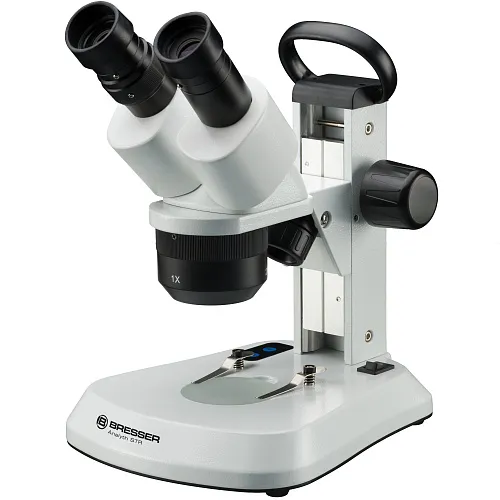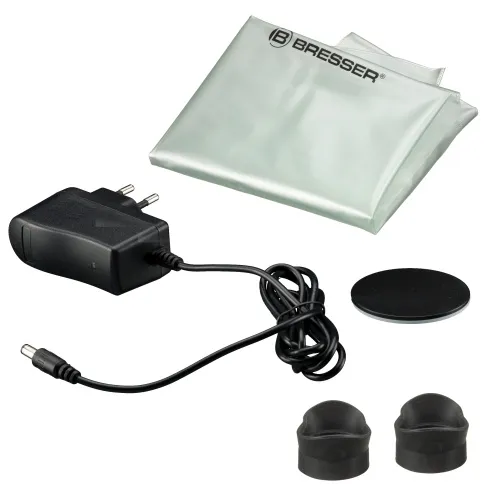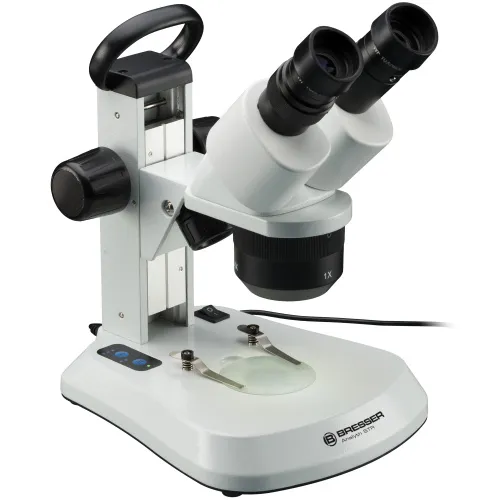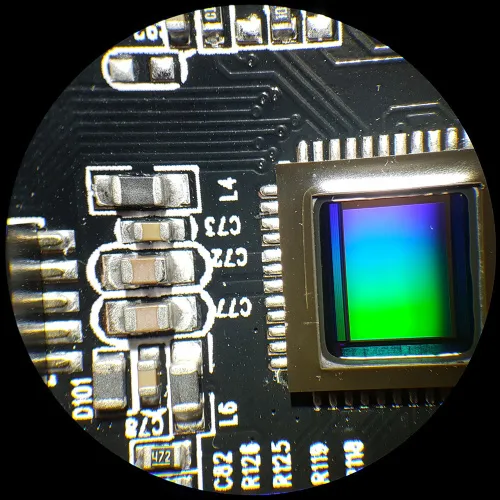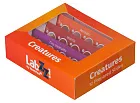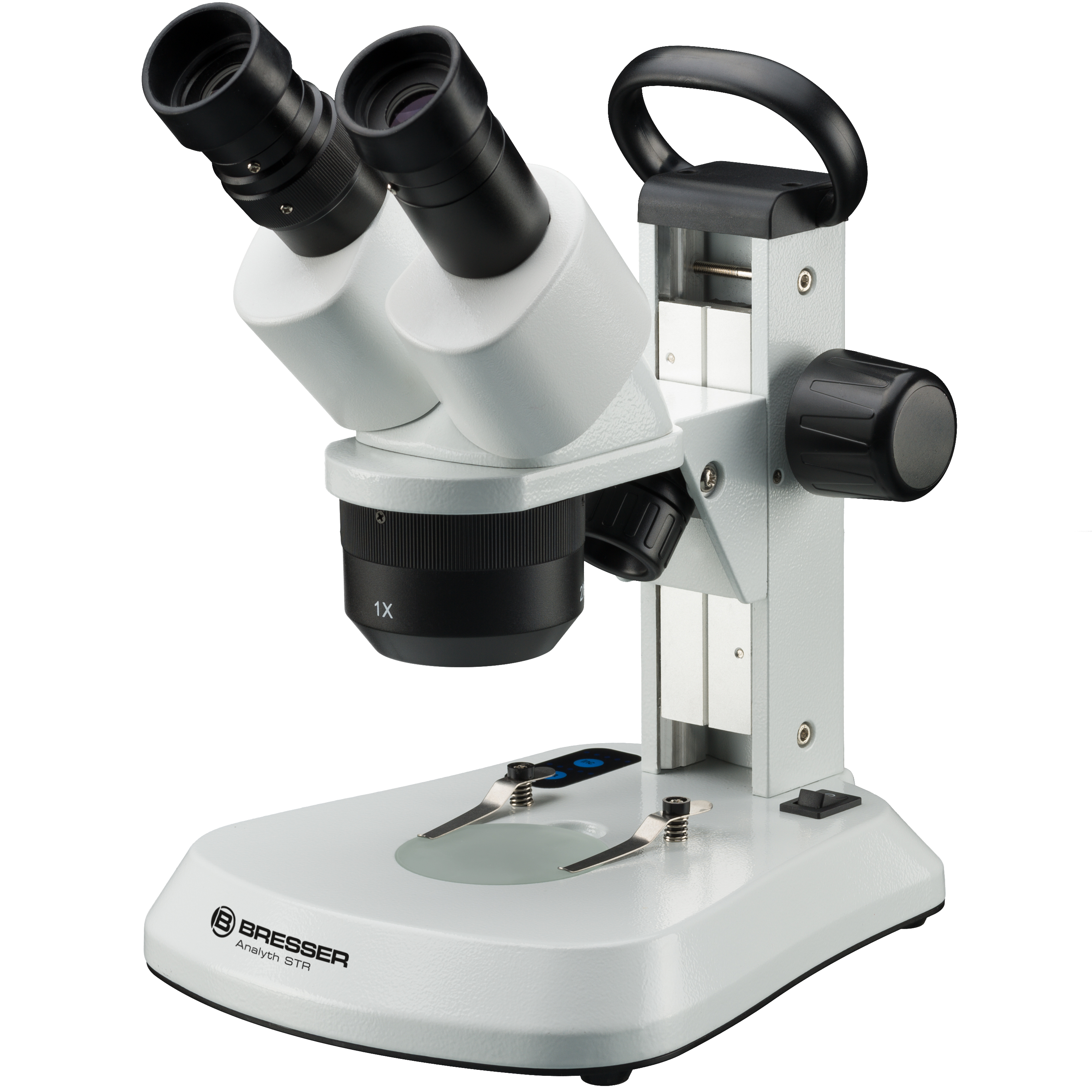Bresser Analyth STR 10x - 40x stereo microscope
Magnification: 10–40x. Stereo Microscope. Working distance: 50mm
| Product ID | 76449 |
| Brand | Bresser GmbH, Germany |
| Warranty | 2 years |
| EAN | 4007922064208 |
| Package size (LxWxH) | 31x22x34 cm |
| Shipping Weight | 2.86 kg |
The Analyth STR comes with 3 different magnifications, that can easily be switched by turning the objective. It is easy to change magnifications from 10x to 20x or 40x. The stereo microscope will show structured objects nicely in 3D, which is especially impressive. The low starting magnification of 10x is helpful when working with children and will show objects in full up to a size of 20mm. With the wide magnification range, the Analyth STR is a versatile instrument. You can use it to view insects, plants, minerals and much more. It is useful for hobbyists, in schools and more. Typical professional applications include quality control, gardening or farming (pest control), hydrobiology and much more.
The interpupilllary distance and the diopters can be adjusted to your needs. The eyepieces feature a big field of view of 20mm. They are equipped with rubber eyecups and have a locking screw to prevent loss or damage during transport.
The power supply can be achieved through the AC adapter or with a set of 3 AA type batteries (batteries not included). This makes the microscope perfect for mobile use, e.g. outside in the garden or for biology field work.
Features:
- Microscope with 3 pairs of objectives, magnifications 10x; 20x; 40x
- Wide field eyepieces with eyecups and 20mm field of view
- Bright, economical LED illumination, angle adjustable
- Illumination for incident and transmitted light can be switched separately
- Dimmer operation via a foil switch with status display
- Two specimen plates (black/white or glass matt), with specimen clips
Scope of delivery:
- Microscope with 3 objective magnifications 1x; 2x; 4x
- Metal stand with LED illumination, power supply and battery compartment
- 2 eyepieces with rubber eyecups
- Glass object plate
- Plastic object plate (black/white)
- Dust cover
- Operating instructions
| Product ID | 76449 |
| Brand | Bresser GmbH, Germany |
| Warranty | 2 years |
| EAN | 4007922064208 |
| Package size (LxWxH) | 31x22x34 cm |
| Shipping Weight | 2.86 kg |
| Type | light/optical, stereo/instrumental |
| Microscope head type | binocular |
| Magnification, x | 10 — 40 |
| Eyepiece tube diameter, mm | 30.5 |
| Objectives | 1x, 2x, 4x |
| Interpupillary distance, mm | 50 — 77 |
| Stage features | with clips |
| Eyepiece diopter adjustment | ✓ |
| Illumination | LED |
| Brightness adjustment | ✓ |
| Power supply | 220–240V network adapter (included), 3 AA batteries (not included), charged via USB (cord included) |
| User level | beginners |
| Assembly and installation difficulty level | easy |
| Application | for applied research |
| Illumination location | dual |
| Research method | bright field |
and downloads
We have gathered answers to the most frequently asked questions to help you sort things out
Find out why studying eyes under a microscope is entertaining; how insects’ and arachnids’ eyes differ and what the best way is to observe such an interesting specimen
Read this review to learn how to observe human hair, what different hair looks like under a microscope and what magnification is required for observations
Learn what a numerical aperture is and how to choose a suitable objective lens for your microscope here
Learn what a spider looks like under microscope, when the best time is to take photos of it, how to study it properly at magnification and more interesting facts about observing insects and arachnids
This review for beginner explorers of the micro world introduces you to the optical, illuminating and mechanical parts of a microscope and their functions
Short article about Paramecium caudatum - a microorganism that is interesting to observe through any microscope

